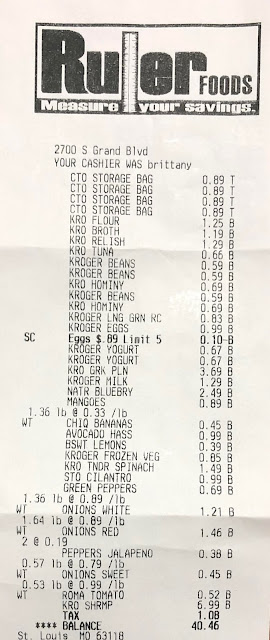 |
| Source: https://www.vectorstock.com/royalty-free-vector/logo-of-intermittent-fasting-clock-face-vector-23297574 |
Intermittent fasting has become an increasingly popular diet of choice for many Americans looking to improve their health, but is it effective? Is it practical? Let’s jump into some of the most recent research to find out how effective intermittent fasting is for weight loss and overall health, while also evaluating its practicality.
What is an Intermittent-Fasting diet?
First, the numerous different ways to intermittently fast will be discussed. Intermittent fasting can be defined as eating patterns where individuals go extended periods of time with little or no caloric intake, with intervening periods of normal food intake, on a recurring basis3. The logic behind intermittent fasting is that current regular eating patterns of three meals per day plus snacks is likely to lead to overconsumption of food, ultimately leading to weight gain and/or chronic disease. By shortening the time window in which people eat, it makes it more difficult to overeat. As mentioned previously, there are multiple different ways to intermittently fast. The three most common forms from recent research are alternate day fasting, 5:2 intermittent fasting, and daily time-restricted feeding. Alternate day fasting involves alternating fasting days (no calories consumed) with eating days (food and beverage consumed as desired)4. 5:2 intermittent fasting allows individuals to eat what they desire for 5 days per week while severely restricting their intake on 2 nonconsecutive days during the week. Lastly, daily time-restricted feeding allows individuals to consume food as desired during a set time window each day while fasting for the remainder of the day. A typical daily time-restricted feeding regimen is consuming all calories between 10:00 am and 6:00 pm and fasting the other 16 hours of the day.
Weight Loss

The driving force for many people wanting to start intermittent fasting is for weight loss. Research has shown that humans tend to behaviorally reduce their food intake when performing daily
intermittent fasting (daily time-restricted feeding)1. A small recent study that lasted 8 weeks resulted in an average of 9% weight loss in obese individuals 1. It was noted that participants in the study tended to struggle to meet energy requirements when eating in a more restricted time window.
Overall, studies on all three types of intermittent fasting have proved to be effective for weight loss in normal and overweight individuals. However, lots of research is showing that alternate day fasting and 5:2 intermittent fasting are difficult to sustain long-term 4. During fasting days, many participants reported extreme and persistent hunger, causing discomfort 1,4. Individuals performing daily time-restricted feeding, however, seem to deal with fewer hunger issues 1.

Effects on Chronic Disease
Intermittent fasting has not only shown promise for weight loss, but also in improving chronic disease measures. Cardiovascular disease risk seems to improve during intermittent-fasting 2. Intermittent fasting has shown to improve blood pressure, cholesterol, and blood glucose control, all of which contribute to a lower risk of developing cardiovascular disease 2. Improved glycemic control in individuals with type 2 diabetes has been observed during intermittent fasting when compared to those who are on a regular diet as well 1. Additionally, intermittent fasting has also shown reduced markers of inflammation in the body 2. The evidence on improving chronic disease risk through intermittent fasting isn’t as strong as the evidence for weight loss. However, recent research is promising that intermittent fasting can reduce risk of cardiovascular disease while also providing an anti-inflammatory effect on the body.
Ramadan
Interestingly, many Muslims throughout the world practice a form of intermittent fasting each year during the month of Ramadan. Muslims taking part in Ramadan typically do not eat or drink anything during daylight hours and will consume one meal just before dawn and another after sunset 5. This would be considered daily time-restricted feeding. Many researchers saw the unique eating habits during Ramadan as an opportunity to research this form of intermittent fasting. A recent research article stated that 60% of studies on fasting during Ramadan indicated significant weight loss, averaging around 3 pounds 4. Additionally, improvements in cholesterol, blood glucose, and inflammation were noted in numerous studies 4. This research further strengthens evidence that intermittent fasting can help aid in weight loss and may provide other beneficial health outcomes.
Summary
Intermittent fasting appears to be a good option for weight control for those who struggle with overconsumption of food. In addition to weight loss, some research is showing other potential benefits such as reduced risk of cardiovascular disease and lower levels of inflammation. Although, types of intermittent fasting such as alternate day fasting and 5:2 intermittent fasting require periods of 20-36 hours with either no food or very little food intake1. The ability to sustain these types of intermittent fasting is reported to be very difficult1. Time-restricted daily feeding, however, seems to cause less of a hunger burden and may be the more practical option. Time-restricted daily feeding typically includes 8 hours of eating time and 16 hours of fasting time, but slight changes can still allow for better weight control. For some people, a 12-hour fast and a 12-hour eating time will help reduce consumption. Overall, nutrition and eating habits are very individualized and intermittent fasting isn’t for everyone, but research indicates that certain types of intermittent fasting are reasonable options.
References:
Antoni, R., Johnston, K. L., Collins, A. L., & Robertson, M. D. (2017). Effects of intermittent fasting on glucose and lipid metabolism. Proceedings of the Nutrition Society, 76, 361-368.
De Cabo, R. & Mattson, M. P. (2020). Effects of intermittent fasting on health, aging, and disease. The New England Journal of Medicine, 381, 2541-2551.
Mattson, M. P., Longo, V. D., & Harvie, M. (2016). Impact of intermittent fasting on health and disease processes. Aging Research Reviews, 39, 46-58.
Patterson, R. E. & Sears, D. D. (2017). Metabolic effects of intermittent fasting. Annual Review of Nutrition, 37, 371-393. (2018). A healthy Ramadan. British Nutrition Foundation.













